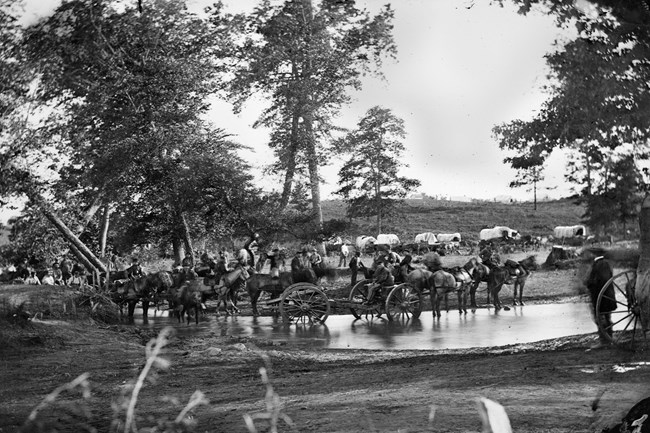Last updated: August 4, 2023
Article
Union Retreat at Cedar Mountain

Library of Congress
Recipient: Virginia Department of Conservation and Recreation
Amount: $429,372.50
Acres: 7.36
In the summer of 1862, the Union Army changed its strategy for marching on the Confederate Capital of Richmond, Virginia. After enduring the setback of the Seven Days’ Battles, northern forces shifted the focus of their renewed advance from the Virginia Peninsula, located between the York and James Rivers, to the rolling hills of Central Virginia – an area that would allow the Union Army more room to maneuver, and an extensive road network to move troops towards Richmond from the north and west.
On August 9, lead elements of the Union’s Army of Virginia under Major General Nathaniel Banks attacked the Confederates of Major General Thomas “Stonewall” Jackson at Cedar Mountain. Fighting in farm fields thick with growing crops and woods that limited visibility, the two sides collided with each other multiple times, shifting the advantage back-and-forth over almost five hours of combat. Colonel Edwin F. Brown of the Twenty-eighth Regiment New York State Volunteers described the battle as “a fiery furnace” that caused him to “wonder how many escaped from certain death upon that field."
Exhausted from the summer heat and facing a concentrated Confederate counterattack, the Union line split apart, and Banks ordered his forces to withdraw. Over the next two weeks, the two armies would be reinforced, and attempt to outmaneuver one another leading to the decisive engagement at Second Manassas.
Awarded to the Virginia Department of Conservation and Recreation (DCR), a 2023 Battlefield Land Acquisition Grant from the National Park Service’s American Battlefield Protection Program will help preserve 7-acres of the Cedar Mountain Battlefield, where Confederate troops counterattacked the Union advance. DCR plans to add this acreage, along with other previously preserve parcels, into the Culpeper State Battlefield Park.
Battlefield Land Acquisition Grants from the NPS American Battlefield Protection Program empower preservation partners nationwide to acquire and preserve threatened Revolutionary War, War of 1812 and Civil War battlefields. In addition, the program administers three other grant opportunities: Preservation Planning Grants, which are open to all sites of armed conflict on American soil, and the newly authorized Battlefield Restoration and Battlefield Interpretation Grants. This financial assistance generates community-driven stewardship of historic resources at the state, tribal and local levels.
